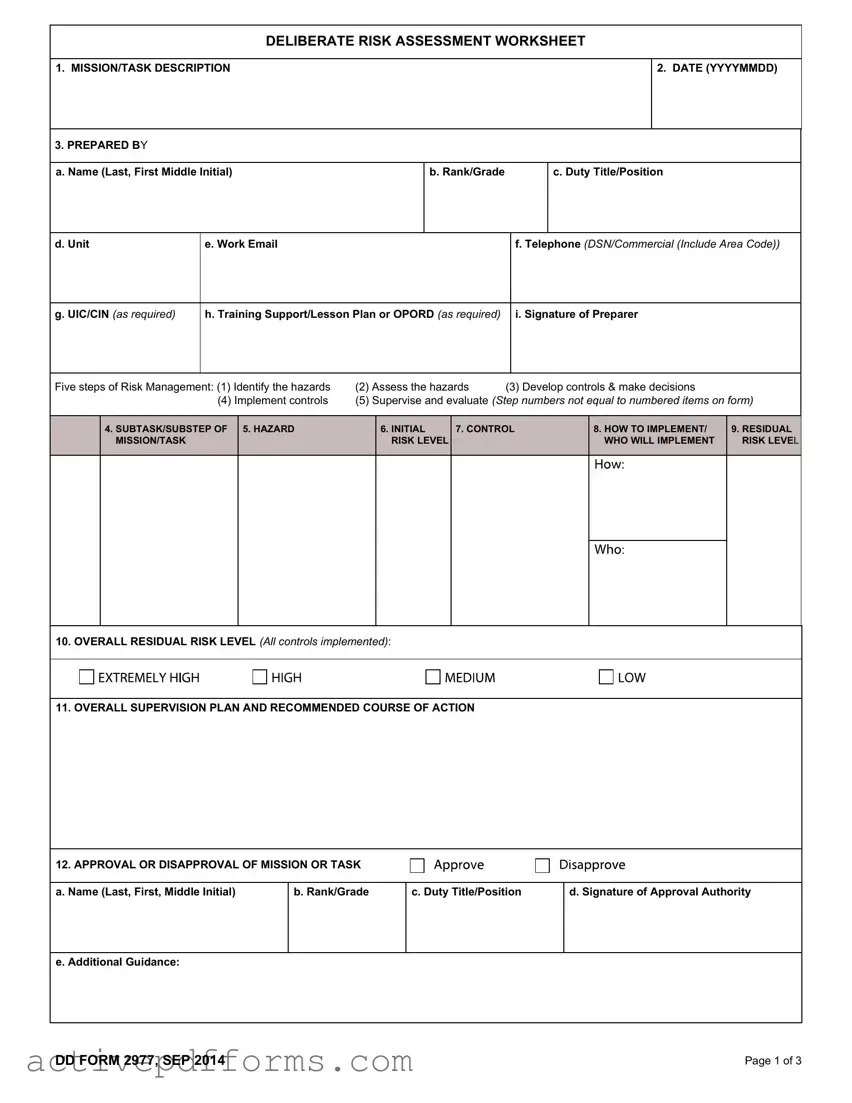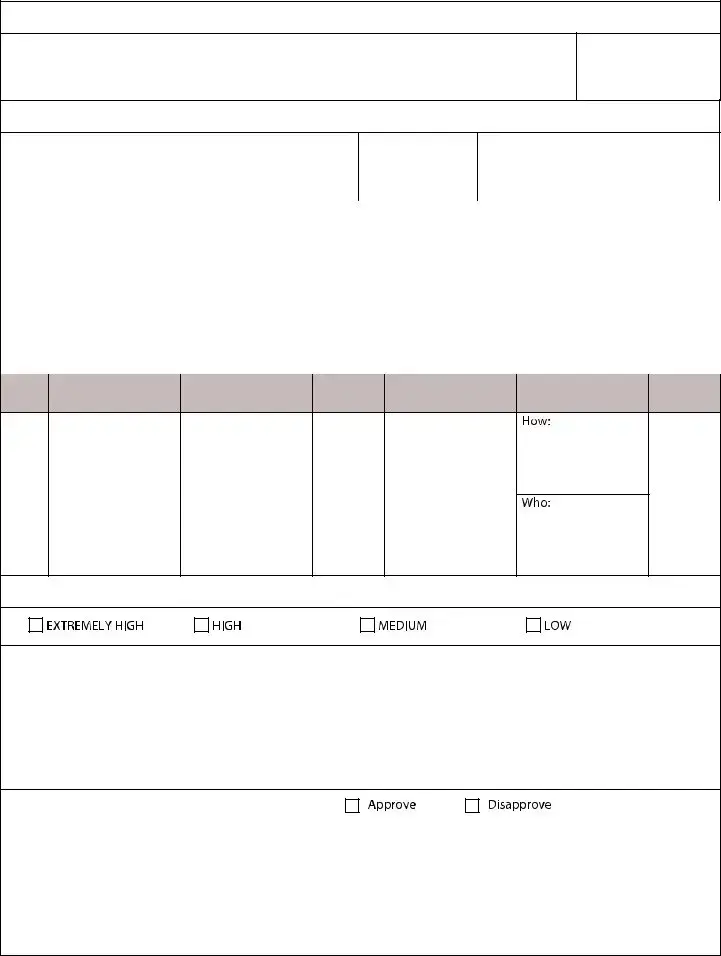1.Mission/Task Description: Briefly describe the overall Mission or Task for which the deliberate risk assessment is being conducted.
2.Date (DD/MM/YYY): Self Explanatory.
3.Prepared By: Information provided by the individual conducting the deliberate risk assessment for the operation or training. Legend: UIC = Unit Identification Code; CIN = Course ID Number; OPORD = operation order; DSN = defense switched network; COMM = commercial
4.Sub-task/Sub-Step of Mission/Task: Briefly describe all subtasks or substeps that warrant risk management.
5.Hazard: Specify hazards related to the subtask in block 4.
6.Initial Risk Level: Determine probability and severity. Using the risk assessment matrix (page 3), determine level of risk for each hazard specified. probability, severity and associated Risk Level; enter level into column.
7.Control: Enter risk mitigation resources/ controls identified to abate or reduce risk relevant to the hazard identified in block 5.
8.How to Implement / Who Will Implement: Briefly describe the means of employment for each control (i.e., OPORD, briefing, rehearsal) and the name of the individual unit or office that has primary responsibility for control implementation.
9.Residual Risk Level: After controls are
implemented, determine resulting probability, severity, and residual risk level.
10.Overall Risk After Controls are Implemented: Assign an overall residual risk level. This is equal to or greater than the highest residual risk level (from block 9).
11.Supervision Plan and Recommended Course of Action: Completed by preparer. Identify specific tasks and levels of responsibility for supervisory personnel and provide the decision authority with a recommend course of action for approval or disapproval based upon the overall risk assessment.
12.Approval/Disapproval of Mission/Task: Risk approval authority approves or disapproves the mission or task based on the overall risk assessment, including controls, residual risk level, and supervision plan.
13.Risk Assessment Review: Should be conducted on a regular basis. Reviewers should have sufficient oversight of the mission or activity and controls to provide valid input on changes or adjustments needed. If the residual risk rises above the level already approved, operations should cease until the appropriate approval authority is contacted and approves continued operations.
14.Feedback and Lessons Learned: Provide specific input on the effectiveness of risk controls and their contribution to mission success or failure. Include recommendations for new or revised controls, practicable solutions, or alternate actions. Submit and brief valid lessons learned as necessary to persons affected.
15.Additional Comments or Remarks: Preparer or approval authority provides any additional comments, remarks, or information to support the integration of risk management.
Additional Guidance: Blocks 4-9 may be reproduced as necessary for processing of all subtasks/ substeps of the mission/task. The addition and subtraction buttons are designed to enable users to accomplish this task.



